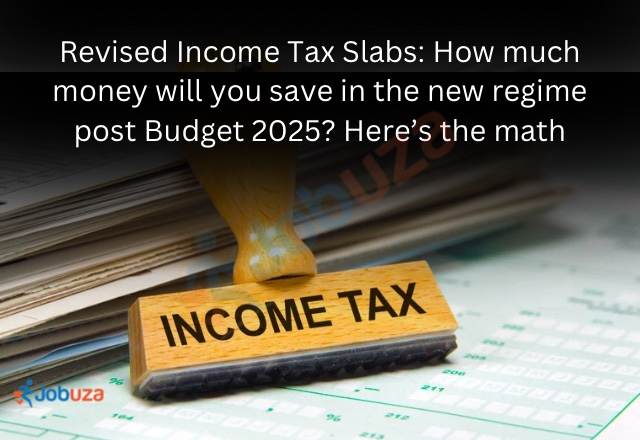Budget 2025: Major Tax Reforms Bring Relief for Middle-Class Taxpayers
New Income Tax Slabs: In the 2025 Budget, Finance Minister Nirmala Sitharaman introduced significant tax reforms aimed at easing the financial burden on middle-class taxpayers. One of the biggest highlights is the proposal to exempt individuals earning up to ₹12 lakh annually from paying any income tax. Additionally, the revised tax structure under the new tax regime offers reduced tax rates, making it more beneficial for salaried individuals and small business owners.
Key Tax Reforms in Budget 2025
Zero Tax on Income up to ₹12 Lakh
The government has proposed that individuals with an annual income of up to ₹12 lakh will not have to pay any income tax. This marks a major relief, allowing taxpayers to save more and increase their disposable income.
Reduced Tax Rates for Middle-Income Earners
The new tax structure introduces lower rates for different income brackets, ensuring that middle-class taxpayers benefit the most. The revised income tax slabs for Budget 2025 are:
- Income up to ₹4 lakh – No tax
- Income between ₹4 lakh and ₹8 lakh – 5% tax
- Income between ₹8 lakh and ₹12 lakh – 10% tax
- Income between ₹12 lakh and ₹16 lakh – 15% tax
- Income between ₹16 lakh and ₹20 lakh – 20% tax
- Income between ₹20 lakh and ₹24 lakh – 25% tax
- Income above ₹24 lakh – 30% tax
These new slabs ensure that middle-income earners pay lower taxes while high-income individuals are taxed progressively.
Additional Tax Rebates and Benefits
The new regime also introduces rebates that further reduce or even eliminate tax liabilities for many taxpayers:
- Individuals earning up to ₹12 lakh will get a full rebate, meaning they owe zero tax.
- A taxpayer earning ₹12 lakh will receive an ₹80,000 rebate, covering the entire tax liability compared to the previous system.
- Someone earning ₹18 lakh will get a rebate of ₹70,000, reducing their total tax burden by 30%.
- For those with an annual income of ₹25 lakh, the rebate amounts to ₹1,10,000, lowering their tax liability by 25%.
This rebate structure makes the tax system more attractive for middle-class earners while ensuring fair taxation for higher-income groups.
Additional Financial Relief Measures in Budget 2025
Higher TDS and TCS Thresholds
The government has raised the Tax Deducted at Source (TDS) threshold on rental income from ₹2.4 lakh to ₹6 lakh per year. This means that individuals paying rent up to ₹50,000 per month will not have to worry about TDS deductions. This move benefits tenants and reduces the compliance burden on small taxpayers.
Relief for Senior Citizens
To support senior citizens, the government has doubled the tax deduction limit on interest income from ₹50,000 to ₹1,00,000. This is a significant benefit for retirees who depend on interest earnings for their daily expenses.
Lower TCS on Foreign Remittances
The Tax Collected at Source (TCS) on remittances under the Liberalized Remittance Scheme (LRS) has been revised, increasing the threshold from ₹7 lakh to ₹10 lakh. Additionally, for remittances made for education through loans from financial institutions, the TCS requirement has been removed. This change makes it easier for students and families to fund education abroad without additional tax burdens.
How These Tax Reforms Impact the Economy
The new tax structure is expected to boost the economy by increasing the disposable income of middle-class taxpayers. With more money in hand, people are likely to spend and invest more, leading to stronger economic growth. By reducing the tax burden, the government aims to drive consumption, encourage savings, and enhance overall financial well-being.
These reforms position Budget 2025 as a taxpayer-friendly policy move, making taxation simpler, fairer, and more beneficial for the middle class.



